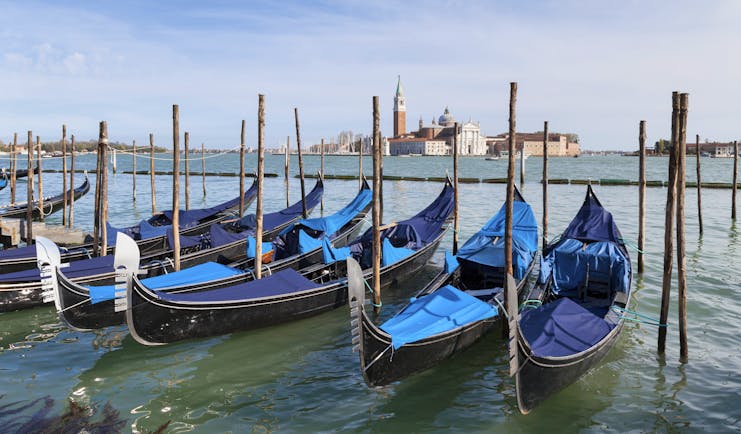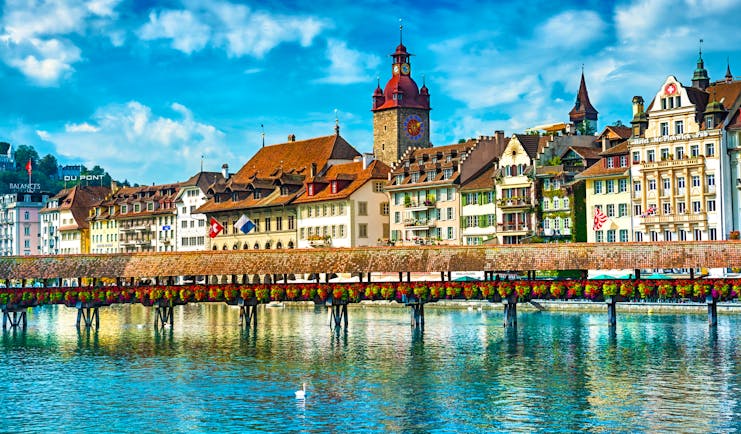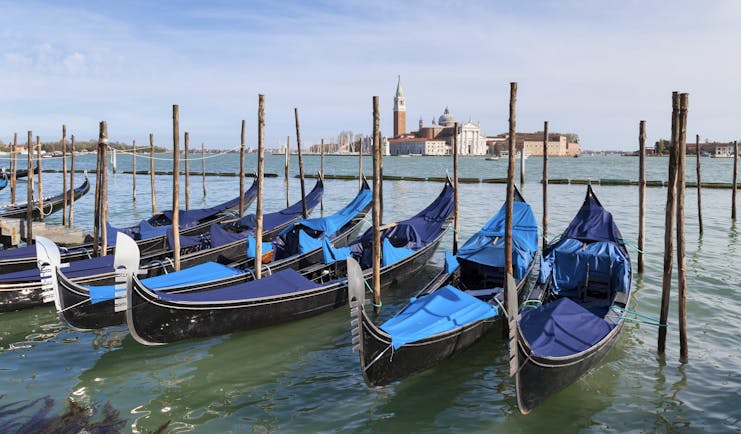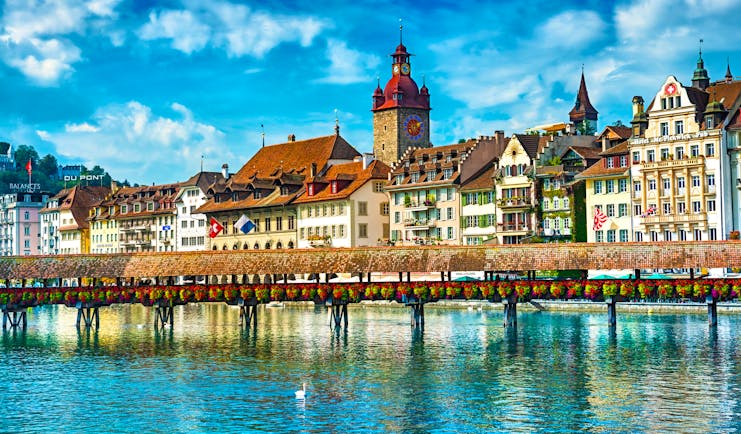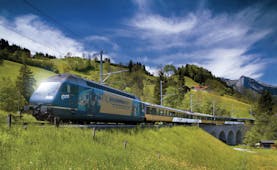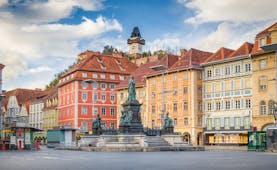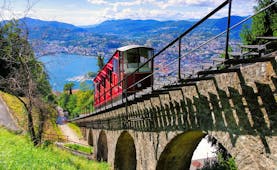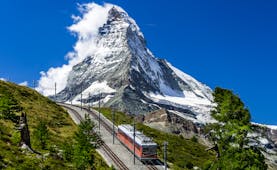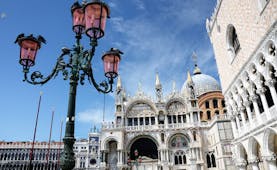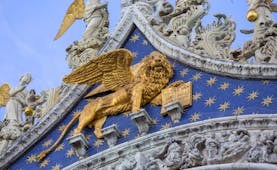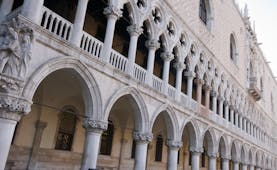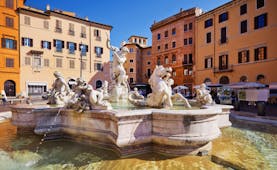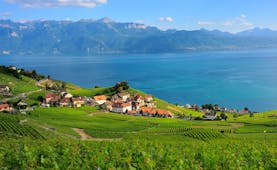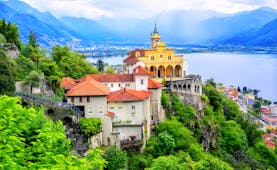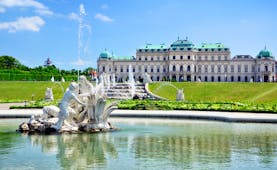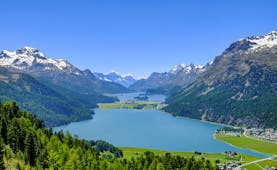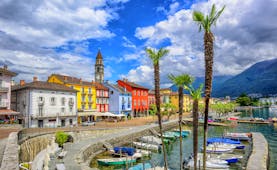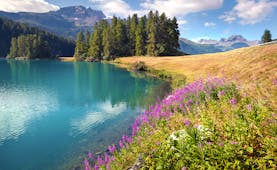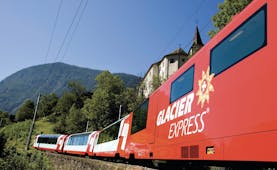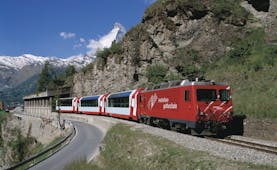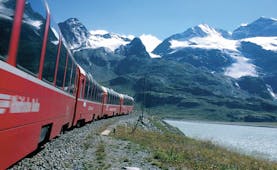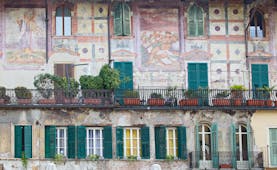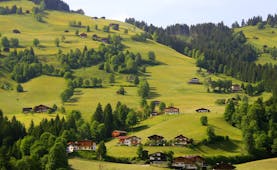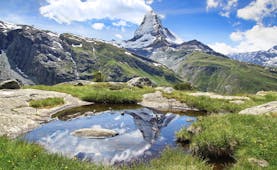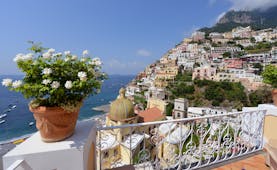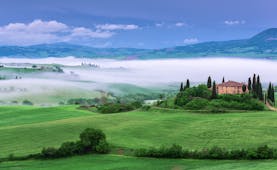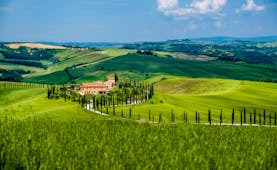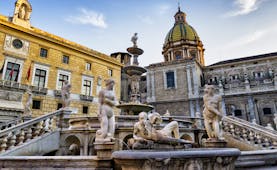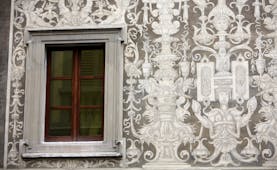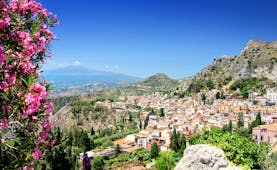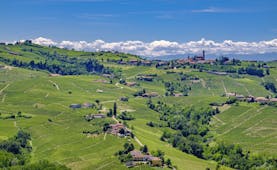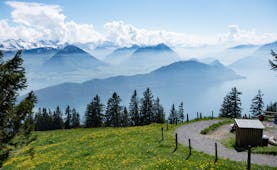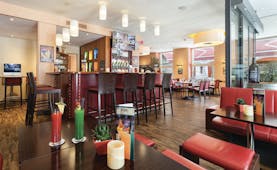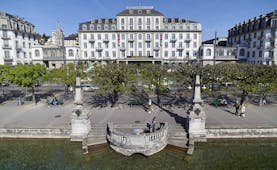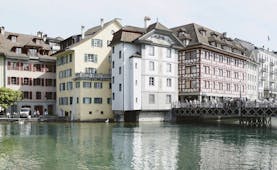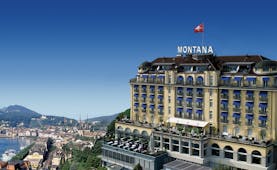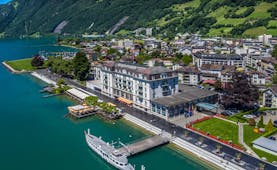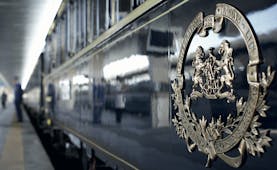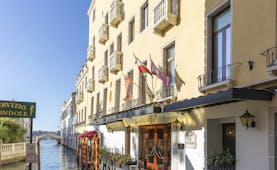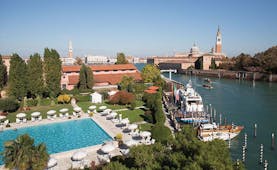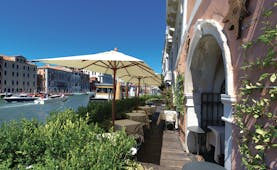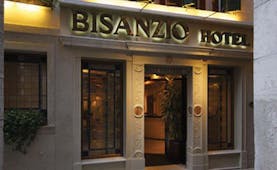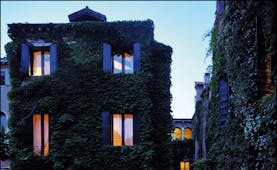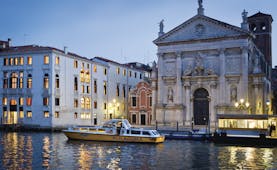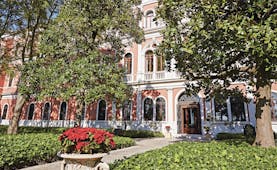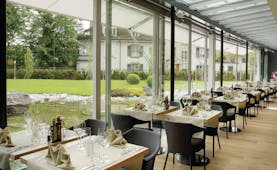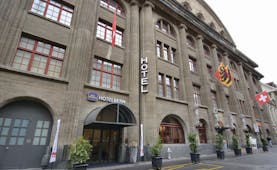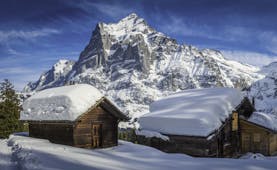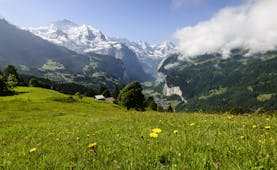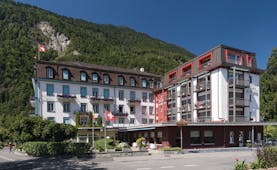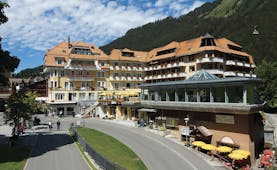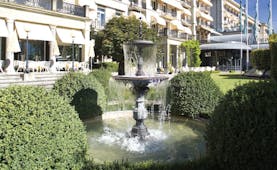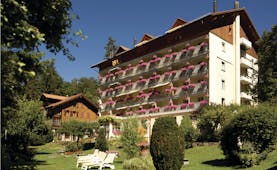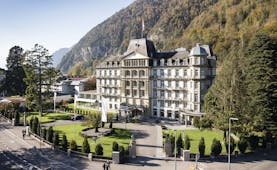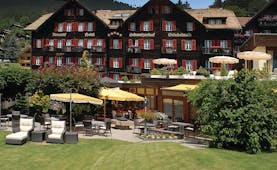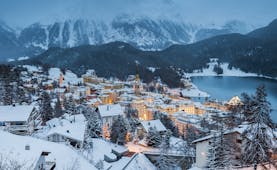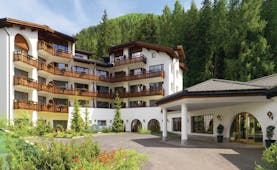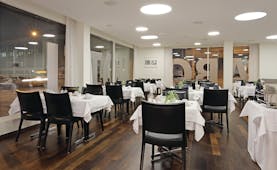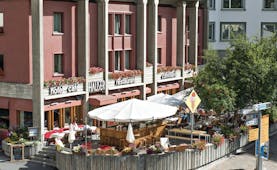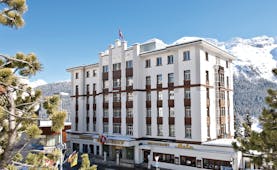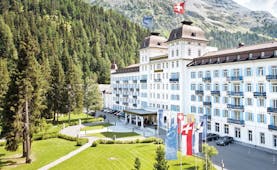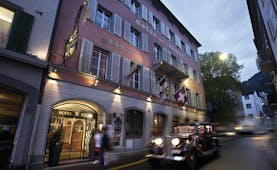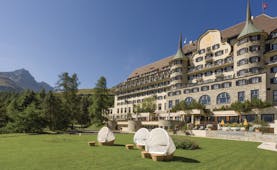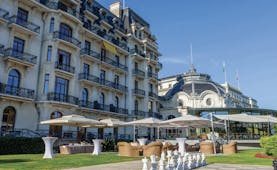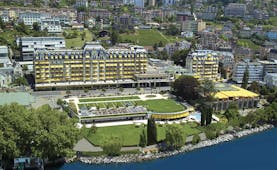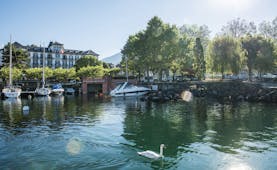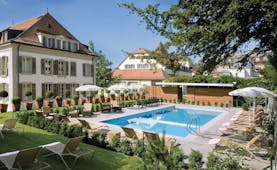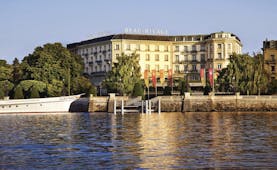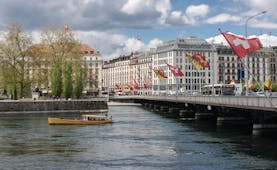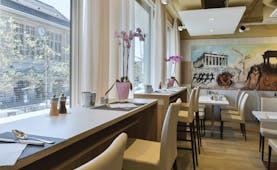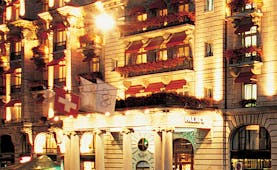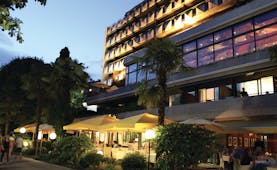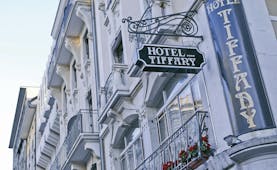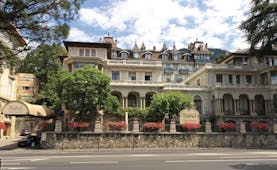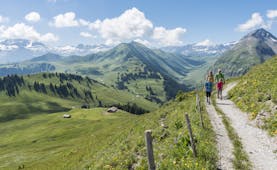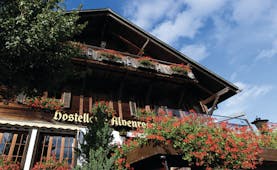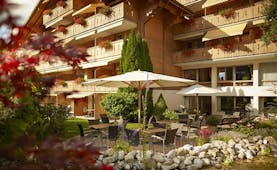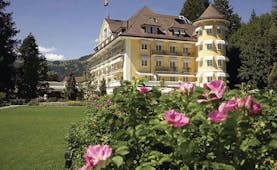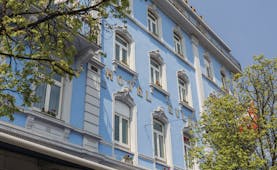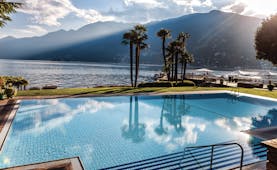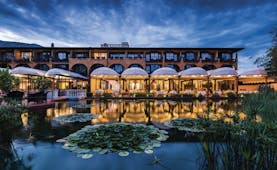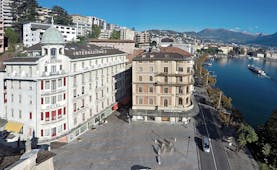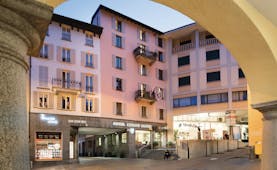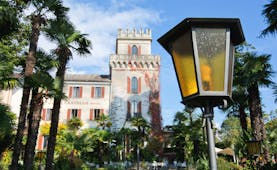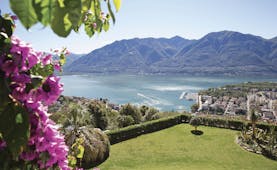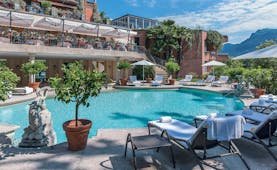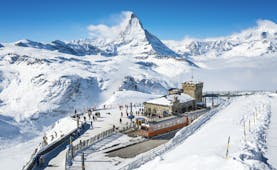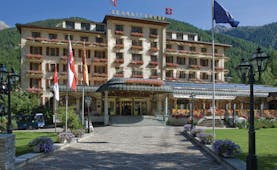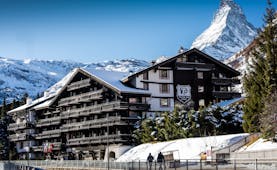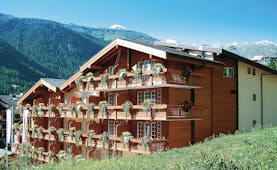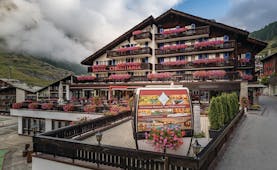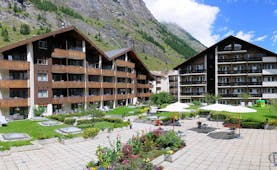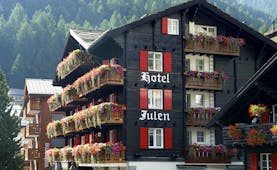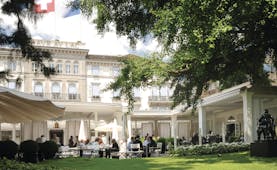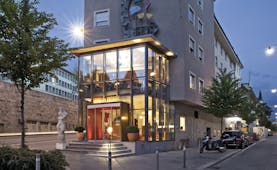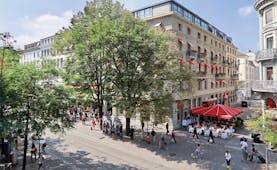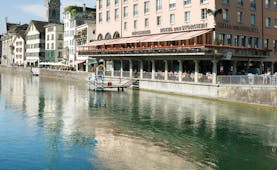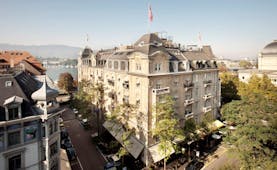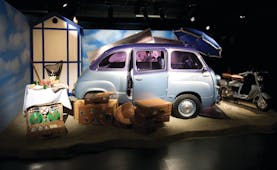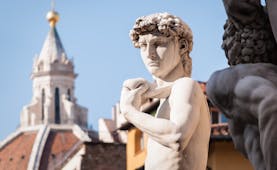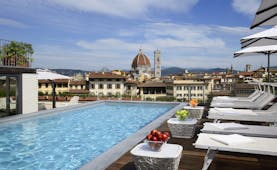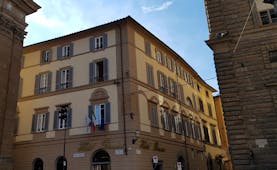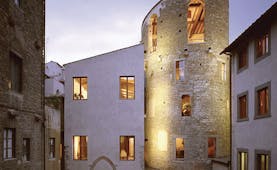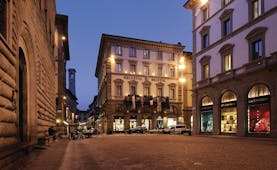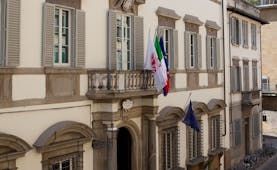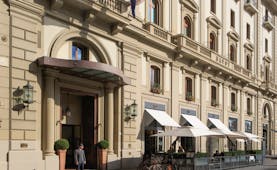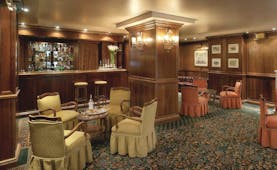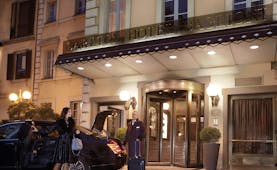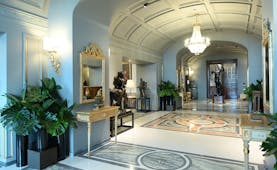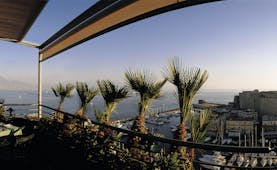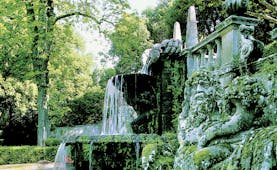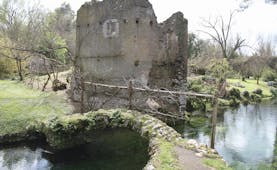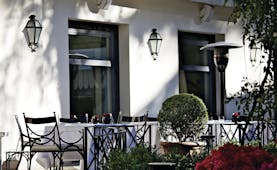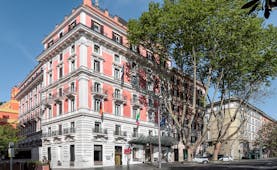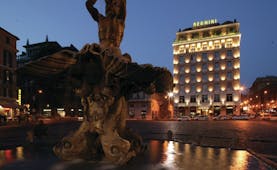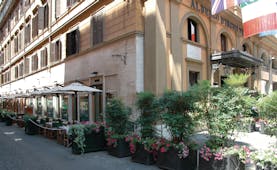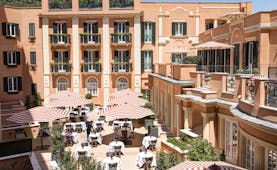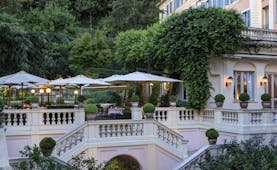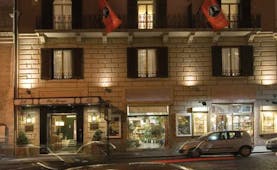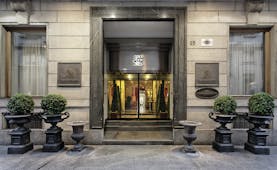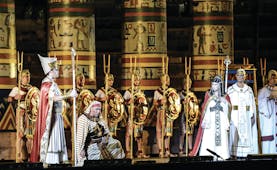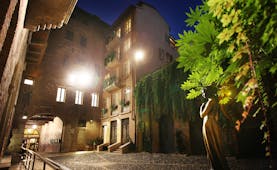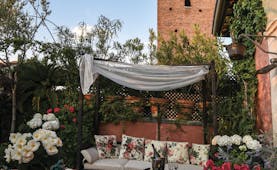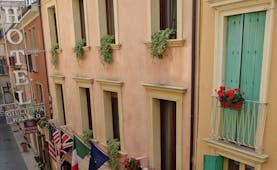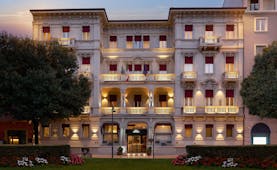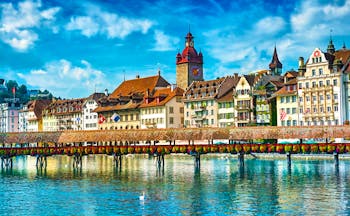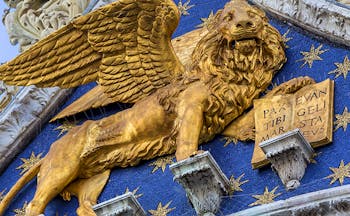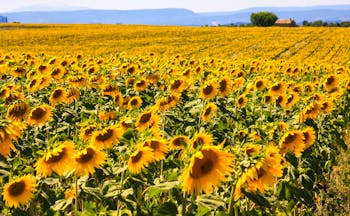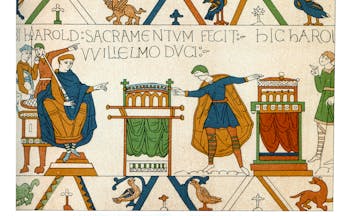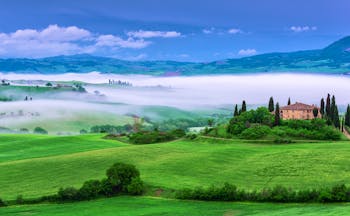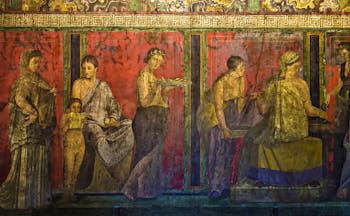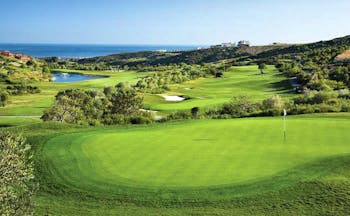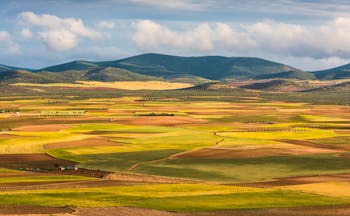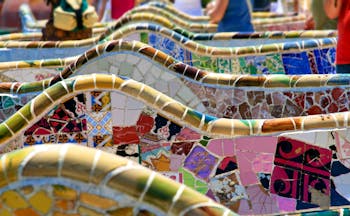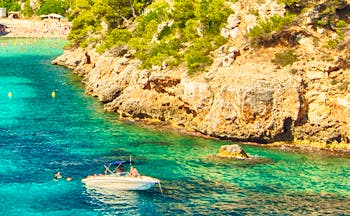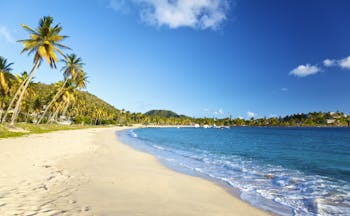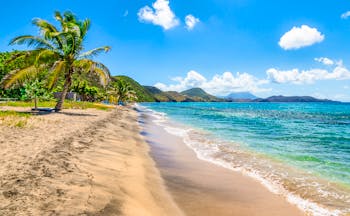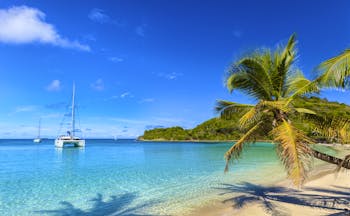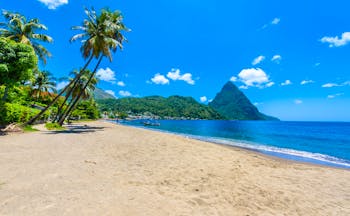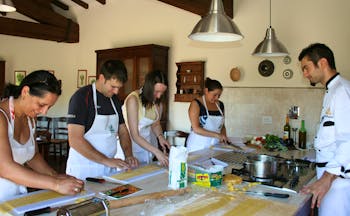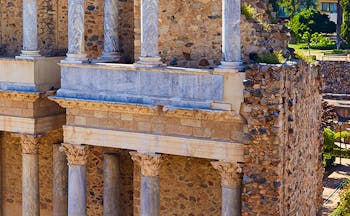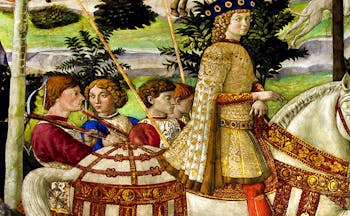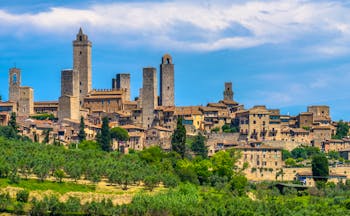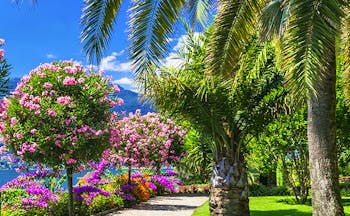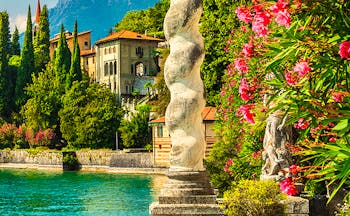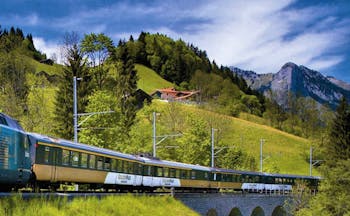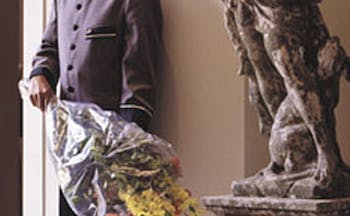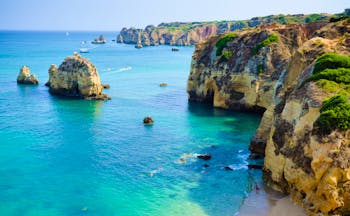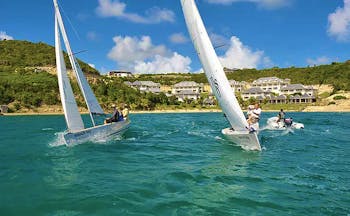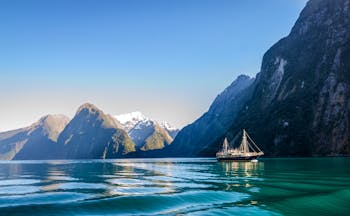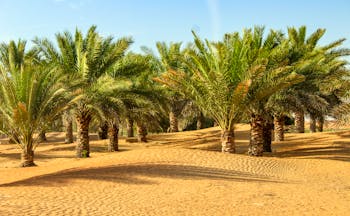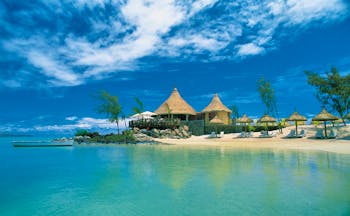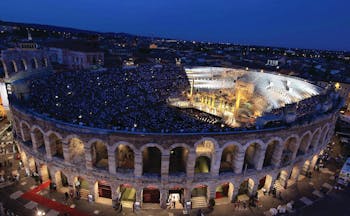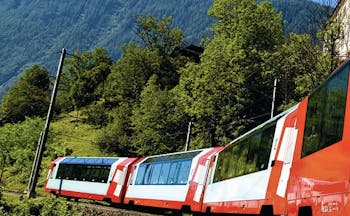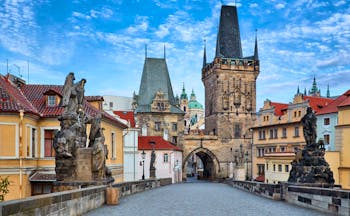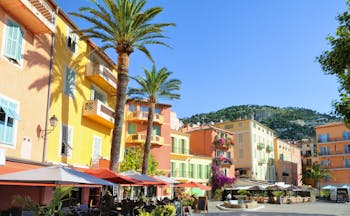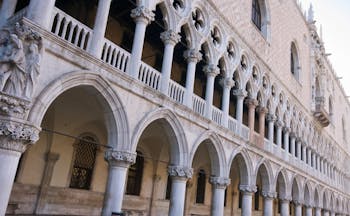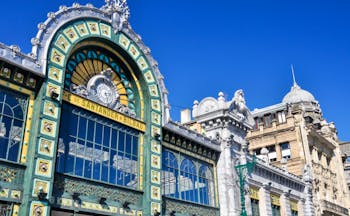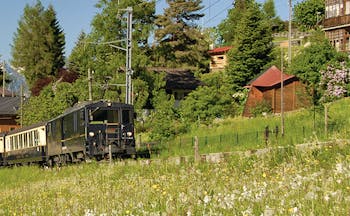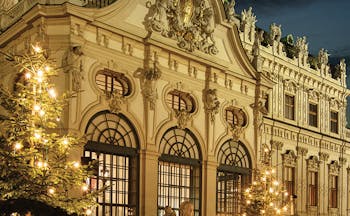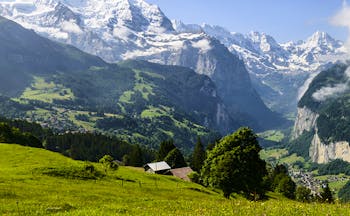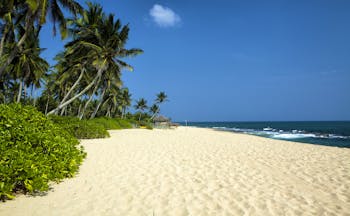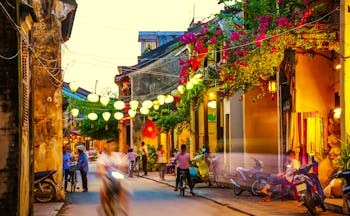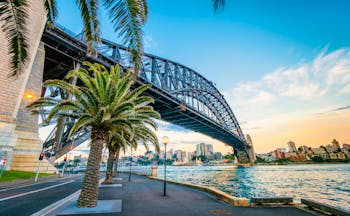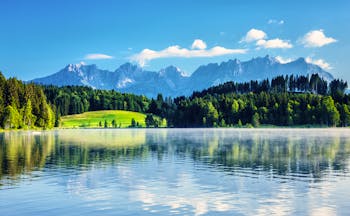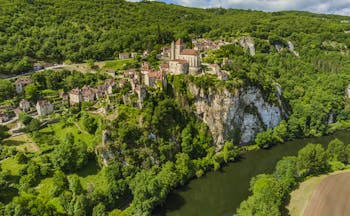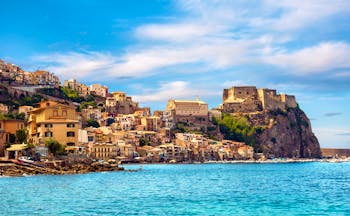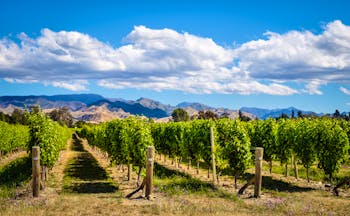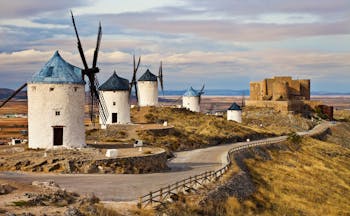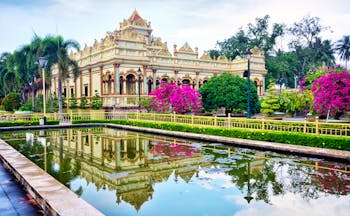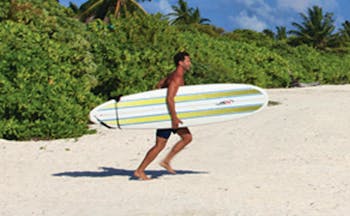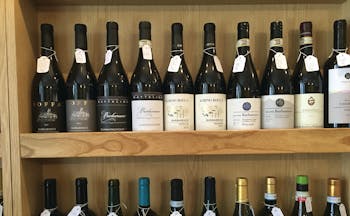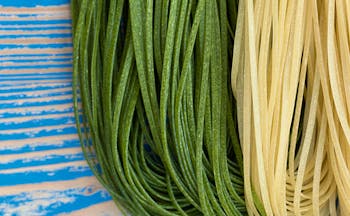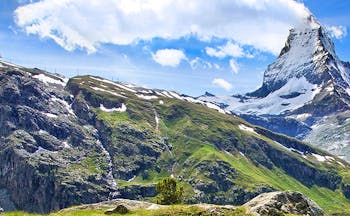Luxury Italian rail holiday, tailormade, to Venice over the Alps by Gotthard Panorama Express
This 6-night rail holiday to Venice offers a scenic route by train through the Alps, in the day-time, after spending a night in Lucerne. The City of Light is a picturesque, small city built at the confluence of the river Reuss and Lake Lucerne, with the mountains of Rigi and Pilatus in the distance. One of the city’s most famous landmarks is the covered Chapel Bridge that crosses the river Reuss. The train journey from Lucerne to Venice takes you along Lake Lucerne, before climbing to pass through the Alps by the Gotthard train tunnel which links Fluelen to Bellinzona in the Italian-speaking part of Switzerland. You cross into Italy at Chiasso and then change trains in Milan for the final leg of your journey, passing through the northern Italian art cities of Verona, Vicenza and Padua. You are met by a private water taxi when you arrive at Venice Santa Lucia station to be taken to your hotel. You have three nights in Venice to explore as your interests dictate: the iconic sights of the city including St Mark’s Square and the Doge’s Palace, the numerous churches and their works of art, the art galleries and museums, the islands in the lagoon or the Lido, on the open sea. Your return journey takes you by train from Venice to Turin where you spend one night before taking an early direct train from Turin to Paris. In Paris, change to the Eurostar for the final train ride back to London.
Highlights
Eurostar London to Paris return • Lucerne • Gotthard Express • Venice • Visit the islands of Murano and Burano • Visit the Guggenheim • Return by sleeper train
Day by day
Begin your rail holiday to Lucerne and Venice by departing from London by Eurostar to Paris just before 08.00 hrs. Transfer from the Gare du Nord to the Gare de Lyon by taxi where you board the high-speed TGV train to Basel and then onwards to Lucerne where you arrive at around 19.00 hrs. Your hotel is in the centre of this charming city, and there is a choice of restaurants within walking distance.
Your journey to Venice from Lucerne takes you through the spectacular scenery of the Alps before changing trains and Milan and heading east across the Po valley to Venice. You have two full days in Venice.
More than a city, Venice “La Serenissima” is an enchantress. Take the time to discover her winding streets, canals, quiet squares and lively waterfronts. To make the most of your time in Venice, it’s worth dividing the city into areas or themes. The obvious place to start is at St Mark’s Square, best appreciated whilst sipping a Venetian coffee at Florian’s. St Mark’s Basilica, the Doge’s Palace and the Campanile can all be visited. The magnificent churches of Venice are worth seeking out: Santa Maria della Salute, Ss Giovanni e Paolo, and Santa Maria Gloriosa dei Frari (with works by Titian), Santa Maria dei Miracoli and the Gesuiti. The Jewish quarter can be found just off the Strada Nova to the north of the city and gives you a rare insight into the history of the Jewish community in Venice. There is a clutch of art galleries to be enjoyed including the Ca’ Pesaro, the Ca’ d’Oro, the Galleria dell’Accademia, the Scuola di San Rocco and for modern art, the Peggy Guggenheim Collection. The streets of Venice also contain a treasure trove of tiny artisan shops selling glassware, masks, lace and silk, and shoes. To absorb the magic of Venice from the water, treat yourself to a ride in a gondola. Across the lagoon, and reached by vaporetto, are the islands of Burano, home to lace-making and fishermen, and Murano, where master craftsmen offer demonstrations of glass-making before you enter their shops.
We suggest an early departure from Venice to allow you plenty of time in Turin for sightseeing this afternoon. There is a direct train at 08.18 from Venice arriving in Turin at 11.38 for example, or later, there is one at 10.48 with one change in Milan, arriving in Turin at 14.59. If you have time to explore Turin, capital of Piemonte and home to Fiat, visit the Piazza San Carlo with its cobbles and colonnades. Don't miss the dome of the Guarini chapel in the Cathedral.
The direct train to Paris leaves at just after 7.30 this morning, but arrives into Paris in under six hours. This gives you time to have lunch in Paris or to take a mid afternoon train from the Gare du Nord to London.
Always happy with travel arrangements and hotel suggestions made and the options put forward by Expressions. Always very responsive and reassuring.Ms M, June 2025
Holiday price guide Price from £2,280 per person based on two people sharing a double room in 4-star hotel option including second class rail travel. With 5-star hotel in Venice from £3,200 per person. Supplement £570 per person for first class rail travel.
Holiday Code ITBR12
Call us on 01392 441245
Luxury Italian rail holiday, tailormade, to Venice over the Alps by Gotthard Panorama Express
Begin your rail holiday to Lucerne and Venice by departing from London by Eurostar to Paris just before 08.00 hrs. Transfer from the Gare du Nord to the Gare de Lyon by taxi where you board the high-speed TGV train to Basel and then onwards to Lucerne where you arrive at around 19.00 hrs. Your hotel is in the centre of this charming city, and there is a choice of restaurants within walking distance.
Your journey to Venice from Lucerne takes you through the spectacular scenery of the Alps before changing trains and Milan and heading east across the Po valley to Venice. You have two full days in Venice.
More than a city, Venice “La Serenissima” is an enchantress. Take the time to discover her winding streets, canals, quiet squares and lively waterfronts. To make the most of your time in Venice, it’s worth dividing the city into areas or themes. The obvious place to start is at St Mark’s Square, best appreciated whilst sipping a Venetian coffee at Florian’s. St Mark’s Basilica, the Doge’s Palace and the Campanile can all be visited. The magnificent churches of Venice are worth seeking out: Santa Maria della Salute, Ss Giovanni e Paolo, and Santa Maria Gloriosa dei Frari (with works by Titian), Santa Maria dei Miracoli and the Gesuiti. The Jewish quarter can be found just off the Strada Nova to the north of the city and gives you a rare insight into the history of the Jewish community in Venice. There is a clutch of art galleries to be enjoyed including the Ca’ Pesaro, the Ca’ d’Oro, the Galleria dell’Accademia, the Scuola di San Rocco and for modern art, the Peggy Guggenheim Collection. The streets of Venice also contain a treasure trove of tiny artisan shops selling glassware, masks, lace and silk, and shoes. To absorb the magic of Venice from the water, treat yourself to a ride in a gondola. Across the lagoon, and reached by vaporetto, are the islands of Burano, home to lace-making and fishermen, and Murano, where master craftsmen offer demonstrations of glass-making before you enter their shops.
We suggest an early departure from Venice to allow you plenty of time in Turin for sightseeing this afternoon. There is a direct train at 08.18 from Venice arriving in Turin at 11.38 for example, or later, there is one at 10.48 with one change in Milan, arriving in Turin at 14.59. If you have time to explore Turin, capital of Piemonte and home to Fiat, visit the Piazza San Carlo with its cobbles and colonnades. Don't miss the dome of the Guarini chapel in the Cathedral.
The direct train to Paris leaves at just after 7.30 this morning, but arrives into Paris in under six hours. This gives you time to have lunch in Paris or to take a mid afternoon train from the Gare du Nord to London.
Always happy with travel arrangements and hotel suggestions made and the options put forward by Expressions. Always very responsive and reassuring.Ms M, June 2025
Holiday price guide Price from £2,280 per person based on two people sharing a double room in 4-star hotel option including second class rail travel. With 5-star hotel in Venice from £3,200 per person. Supplement £570 per person for first class rail travel.
Holiday Code ITBR12
Our prices include
● Second-class travel on all trains, with standard class on Eurostar (first and standard premier can be booked at a supplement)
● Private return water taxi transfers from Venice Santa Lucia station to the hotel
● 1 night’s bed and breakfast in a Classic room at the Hotel Wilden Mann in Lucerne
● 3 nights’ bed and breakfast Classic room at the Hotel Bisanzio in Venice
● 1 night’s bed and breakfast in a Classic room at the Grand Hotel Sitea in Turin
● Concierge service and Expressions Holidays regional helpful hints
Our prices do not include
● Early check-in or late check-out at any hotels (although we can arrange this on request at additional cost)
● Any other services not mentioned above, such as transfers and meals except breakfast at hotels
● Personal holiday insurance. This is essential and cover should be in place from when you book the holiday.
● Local tourist tax, usually between Euros 1 and 3 per person per night, and payable locally to the hotel
● Transfers in Paris and Lucerne
Call us on 01392 441245
Luxury Italian rail holiday, tailormade, to Venice over the Alps by Gotthard Panorama Express
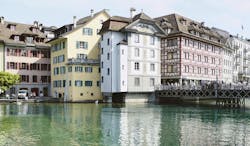
Hotel Wilden Mann is a 4-star boutique hotel in an excellent central location. With gourmet cuisine and stylish, comfortable accommodation, the 500 year-old hotel balances its historic and old-world style with elegance and modern facilities.
Classic room
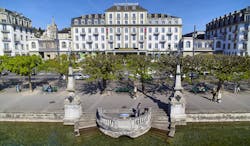
The Hotel Schweizerhof Luzern is a grand 5-star hotel with an imposing history situated on the shores of Lake Lucerne.
Style double city view room
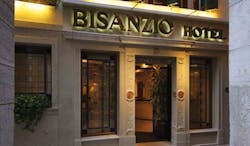
Hotel Bisanzio is an elegant 4-star hotel, which exudes historical charm, in an excellent position for exploring the main sights of Venice.
Classic room
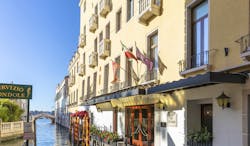
Baglioni Hotel Luna is an award-winning, 5-star boutique hotel in an outstandingly convenient yet charming location. The award-winning restaurant and opulent Venetian style afford guests a luxurious retreat after a day soaking up the cultural and historical delights of Venice.
Superior room
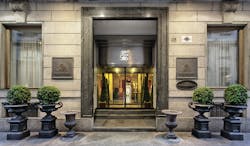
Grand Hotel Sitea is a 5-star classic hotel in the heart of Turin. The gourmet cuisine and stylish, comfortable accommodation make it an ideal spot to recuperate after a day enjoying the city's historical and cultural sites.
Classic room
Always happy with travel arrangements and hotel suggestions made and the options put forward by Expressions. Always very responsive and reassuring.Ms M, June 2025
Holiday price guide Price from £2,280 per person based on two people sharing a double room in 4-star hotel option including second class rail travel. With 5-star hotel in Venice from £3,200 per person. Supplement £570 per person for first class rail travel.
Holiday Code ITBR12
Call us on 01392 441245
Luxury Italian rail holiday, tailormade, to Venice over the Alps by Gotthard Panorama Express
About Lake Lucerne
An Expressions tailor-made holiday to Lake Lucerne allows travellers to be immersed in history, folklore, and bustling modern culture. Lake Lucerne brings together everything that makes Switzerland in summer so special. The city of Lucerne itself is one of the most beautiful cities in the world. White-walled, tiled-roof townhouses crowd together on the water's edge; bridges on stilts take visitors from one side of the river to the other; and the high original rampart wall is visible in the distance. Outside the city, you are free to enjoy the Alpine panoramas from a boat, or from one of the hiking trails that score the mountainsides. Thrilling extreme sports can be enjoyed alongside serene rounds of golf in quilted green valleys, or hours can be whiled away in one of the smaller towns and villages around the lakeside. Further inland, you can uncover villages virtually untouched by commercial tourism that seem to be preserved in a bubble of authenticity. Any stay in the Lake Lucerne region will be one packed full of stunning views, nature excursions, and exhilarating hours on the mountainsides or on the water.
Highlights of Lake Lucerne
Begin your exploration of the Lake Lucerne Region with the famous city itself. To get your bearings, wander along the river or lakeside, stopping first at the Chapel Bridge, Lucerne's main landmark and the most photographed monument in Switzerland. This bridge gets its name from St Peter's Chapel, which stands nearby, and was built in the early 14th century, making it a true testament to its ingenious structure. The Water Tower that stands partway along the bridge once formed part of the city walls, and has served a number of functions, including that of an archive, prison, and torture chamber. Also part of the city's fortifications is the Spreuer Bridge, which, again, stretches across the Reuss, but with an unusual ochre design characterised by the small red turrets attached above the bridge's supports. The so-called ‘Water Spike,' which regulates the water level in the Reuss River, is recognised for being a truly unique sight, due to the specificities of its engineering. For more stunning, historical structures, visit the 17th century Jesuit Church, with its grand, regal Baroque façade, which was the first large sacral church to be built in Switzerland. High above the city is the Musegg Wall. Built in the late 14th century, the wall remains remarkably well preserved, as do the nine towers, of which three are open to the public. For a taste of traditional Swiss life, visit one of the historical squares hidden down the city streets and enjoy a light lunch or drink in one of the cafes. The Town Hall and Pfistern Guildhall, which is artfully painted, are situated on the Kornmarkt Square; the Hirschenplatz Square is named after an inn that dates back to medieval times; and the Weinmarkt Square is the site on which Lucerne swore its federal oath with Schwyz, Uri, and Unterwalden in the early 14th century.
Cultural highlights of Lake Lucerne
Lucerne is home to a variety of museums and galleries, including the KKL Luzern, the Rosengart Collection of works by Picasso and Klee, the Wagner Museum in Tribschen, and the most well-known of them all, the Swiss Museum of Transport. Once you have explored Lucerne's streets, restaurants, and shops, finish your tour with a visit to the Dying Lion of Lucerne. Commemorating the deaths of the Swiss mercenaries at the attack on the Tuileries at the end of the 18th century, this monument is one of the most moving in Europe. Follow the northern shore of the lake to the picturesque villages of Weggis and Vitznau. Weggis is recognisable from the water by the red-topped church spire at the village's highest point. The scattered houses in both are surrounded by green lawns, clusters of evergreen trees, and gently rising slopes. The Wilhelm Tell Express will take you by boat from Lucerne across the river to Fluelen, passing the iconic spots that feature in the legend of Wilhelm Tell, the best known folk character in Switzerland and the Swiss National Hero of Liberty. The meadows in Rutli, for example, are the setting of Friedrich Schiller's recounting of Tell's tale, and Tell's Chapel in Sisikon is built upon Tell's Slab, where he famously jumped from the bailiff's boat before pushing them back into the storm. Further inland, in the neighbouring cantons that claim sections of Lake Lucerne's shores, are several picturesque towns and villages with their own individual character. The town of Schwyz, in the canton of the same name, provides both a valuable connection with the cities and towns to the east of Lake Lucerne and an equally valuable insight into the traditions and atmospheres of small towns that have retained much of their historical air. The most popular and interesting part of this town, which is mainly characterised by its peaceful streets of chalet-style buildings, is the Hauptplatz. Here, you can admire the painted façade of the Town Hall while enjoying some food at the restaurant of the Hotel Wysses Rossli. Those looking to explore the landscape on foot or by cable car should head towards the two main peaks of the Lucerne area: Pilatus and Rigi. The former was once reputedly the home of a dragon and is now believed to be the final resting place of Pontius Pilatus, but most remarkable are the views across 73 Alpine peaks that can be appreciated from the top. Rigi is known as Queen of the Mountains, from the summit of which you can see 13 lakes, the entire Swiss Mittelland, and the borders into Germany and France. A cable car up to Rigi can be taken from Weggis. To enjoy the scenery by rail, take the funicular railway from Stoos to Fronalpstock or vice versa, the track of which is the world's steepest. Once on the mountainsides, you are at your leisure to embark on cycling tours and hiking tours to unveil the waterfalls and mountain streams, to take a once-in-a-lifetime skydiving or paragliding trip, or to take your time with a round of golf. The range of places and activities that surround Lake Lucerne is given its diversity by the stunning landscape, and by the coming together of so many cantons, each with their own unique culture. We would recommend staying long enough to try a little of everything to truly make the most of this fantastic and inspiring region.
Festivals in Lake Lucerne
Lucerne prides itself on being a city of festivals, a title that it lives up to through its blend of music, food, and theatrical celebrations. The biggest of these is without a doubt the Lucerne Carnival. Beginning on Fat Thursday before Lent begins, the carnival features three massive parades with masks, costumes, bonfires, and displays by the various societies in the area. Music festivals in Lucerne also include the World Band Festival at the end of September, the Lucerne Blues Festival at the beginning of November, the Lucerne Festival at the Piano in mid to late November, the two Lucerne Festivals (at Easter and in summer) which focus on classical music, and the Blue Balls music and art festival in late July. Sports enthusiasts might want to plan their visit in time with the Lucerne Regatta, on the 7th to 9th July 2017, and the Athletics Meeting, also in July.
Gastronomy in Lake Lucerne
The food around Lake Lucerne, like its history, is made diverse by the numerous cantons. Visitors can enjoy high-class gourmet food in stylish modern restaurants, or can enjoy traditional delicacies in smaller, family-run establishments. One example of a popular local dish is the Lozarner Churgelipastete, which comprises of veal and mushrooms cooked inside a puff-pastry casing. Those with a sweet tooth might wish to try the pear bread. To try some Swiss Alpine cheese, we would recommend ordering either the raclette or the fondue, as these are possibly the most typically Swiss dishes available. Finish off your culinary tour of Lucerne with some of the famous Swiss chocolate made by a local chocolatier.
Call us on 01392 441245
Luxury Italian rail holiday, tailormade, to Venice over the Alps by Gotthard Panorama Express
About Venice
An Expressions tailor-made holiday to Venice is the chance to visit an enchanting and historical city. Venice, or ‘La Serenissima’ as it has been known for centuries, is truly unique and must be visited at least once in a lifetime. It is essentially a floating museum and was the main centre of trade for the north of Italy from the 13th century right through until the 17th century. The Venetian Republic was one of the richest in Europe and was presided over by the Doge who was elected by the Council of Ten, or the most powerful members of the governing families. The art and architecture that can be seen throughout the city is really a tribute to centuries of patronage and wealth. The Venetian lagoon also has numerous other islands, inhabited and uninhabited which used to grow crops and produce to feed Venice itself and which also used to house some of the city's industries such as glass making and lace making.
Cultural highlights of Venice
St Mark’s Square, Doge’s Palace, Bridge of Sighs, The Grand Canal, Accademia, Museo Correr, Rialto Bridge, La Fenice theatre, The Church of the Redentore, The Church of Santa Maria della Salute.
Festivals in Venice
Venice’s most famous festival is the Carnevale in February, the actual dates of Carnevale vary from year to year, but it generally spans three to four weeks ending on Shrove Tuesday. Costumed and masked people parade around the streets of Venice and there are numerous private parties and dances, but the atmosphere on the final night of Carnevale itself is electric. Alternatively, there is the Regata Storica on the first Sunday in September, when boats and gondolas race against each other along the Grand Canal, or the Feast of the Redentore in mid-July to celebrate the end of the plague in the 16th century. A makeshift bridge is constructed to link the Giudecca island with the Dorsodouro island and there is a huge firework display.
Gastronomy in Venice
Venetian food is naturally fish and sea food orientated and popular dishes include the sweet and sour ‘sardee in saor’ or sardine salad, cuttlefish risotto with its black ink and ‘caparossoi a scota deo’, which are large clams cooked with lemon and pepper. Liver is also popular as are several sweet fried delicacies or ‘fritole’, popular particularly around festival time. This area is famous for its Prosecco and is the home of the ‘Bellini’ cocktail.
Travel around Venice
Gondola rides are always popular, but are expensive. The vaporetto and motoscafo services are good and will take you from A to B and are essential to reach the islands of Murano, Burano and Torcello in the lagoon unless you hire a private water taxi. The services can be disrupted at high tide or ‘Aqua Alta’, which usually occurs in the autumn, or if the lagoon is particularly choppy. To cross the Grand Canal the precarious ‘traghetti’ are like large Gondolas, but you are expected to stand up in order for the maximum number of passengers to board, so it is an art, as well as an experience to remember!

